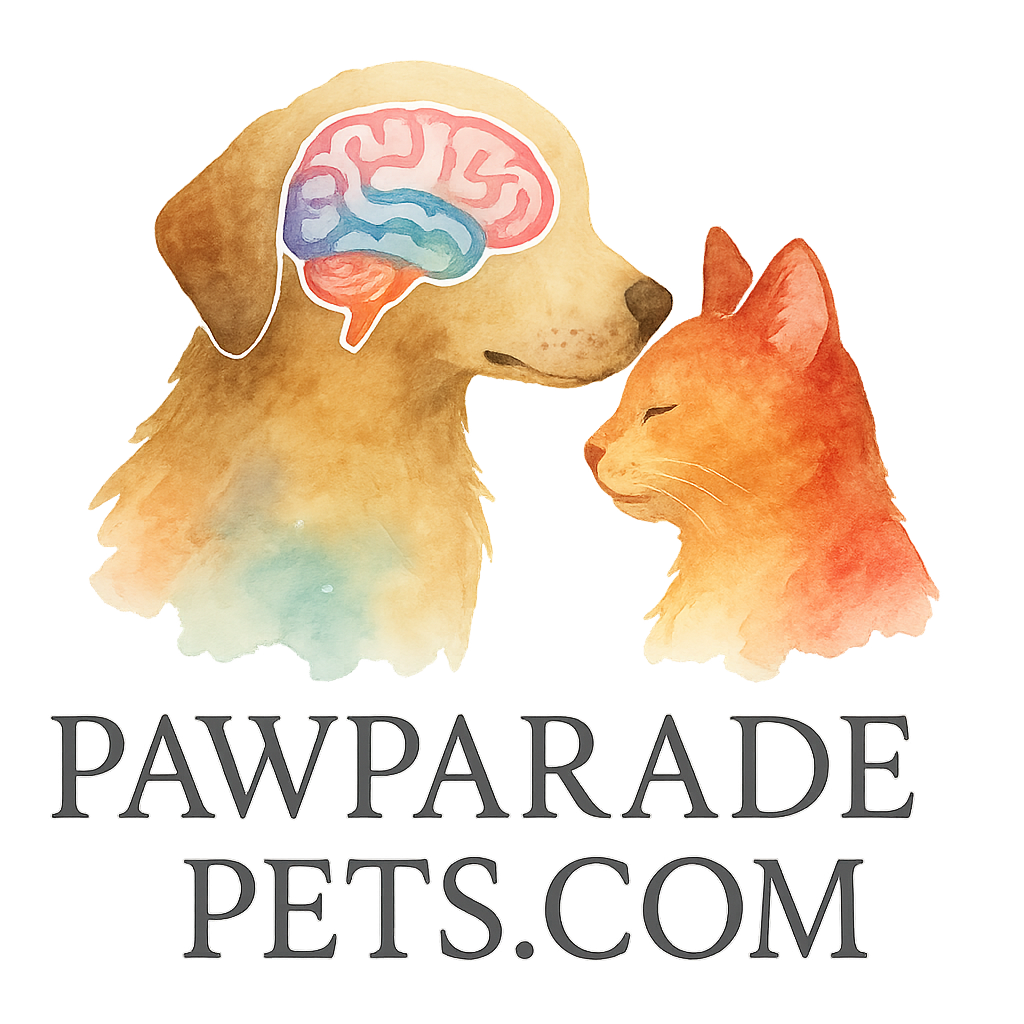Introduction: Why Brain Training Matters for Pets
When people think of training their pets, the first image that comes to mind is usually obedience—sit, stay, come. But brain training is just as important as teaching commands. Just like humans, pets thrive when their minds are stimulated. The good news? You don’t need fancy gadgets, expensive toys, or specialized equipment. With some creativity, you can create fun, enriching brain training routines right in your living room.
The Science Behind Pet Brain Training
Cognitive Benefits for Pets
Mental workouts for pets are like crossword puzzles for humans—they keep the brain sharp. Research shows that regular cognitive engagement helps pets improve memory, decision-making, and adaptability.
Emotional and Behavioral Advantages
Brain training isn’t just about smarts. It helps with behavior and obedience, reduces anxiety, and curbs destructive habits like chewing or digging. A mentally challenged pet is often a happier, calmer one.
How to Get Started with No-Tool Brain Training
Setting the Right Environment
Before you begin, make sure your training spot is distraction-free. A quiet corner of your home helps pets stay focused.
Using Everyday Interactions
Training doesn’t have to be separate from daily life. Incorporate exercises while feeding, walking, or even lounging on the couch.
Routine 1: Name Recognition Games
Teaching Your Pet Their Name
This is the foundation. Call your pet’s name in a cheerful tone. When they respond, praise them or reward them with affection.
Expanding to Object Names
Once your pet masters their name, level up by teaching them the names of everyday items—ball, blanket, bed. This builds vocabulary and recall skills.
Routine 2: Hide-and-Seek Challenges
Hiding Yourself
Step into another room and call your pet. When they find you, celebrate like it’s the biggest victory.
Hiding Treats or Toys Without Tools
Use corners, cushions, or your hands to hide rewards. It taps into natural problem-solving and hunting instincts.
Routine 3: Obedience Command Variations
Basic Commands Refresh
Reinforce sit, stay, and come. Pets thrive on repetition, but don’t let it get boring.
Adding Fun Twists
Turn commands into games. For example, ask your pet to “stay” while you walk in circles around them. It sharpens focus and self-control.
Routine 4: Memory Recall Exercises
Short-Term Recall Games
Ask your pet to sit and stay. Leave the room for a few seconds, then return to see if they’re still in place.
Long-Term Recall Challenges
Practice recalling commands learned weeks or months ago. It strengthens memory retention.

Routine 5: Directional Training (Left, Right, Around)
Using Your Hands and Body
Guide your pet with gestures. Teaching left and right builds spatial awareness.
Turning Commands Into Mini-Games
Use directional cues in playful chases or fetch alternatives (even without toys).
Routine 6: Interactive Storytelling & Voice Games
Using Different Tones
Change your voice—high pitch, low pitch, whisper—and watch how your pet responds.
Building Story-Linked Commands
Tell short stories with embedded commands. Example: “Once upon a time, the hero sat and then jumped.” Pets love interactive play.
Routine 7: Problem-Solving with Everyday Obstacles
Household Obstacle Navigation
Create pathways with pillows, furniture, or even your legs. Encourage your pet to navigate.
Encouraging Creative Thinking
Give your pet freedom to figure out how to solve the obstacle instead of showing them every step.
Routine 8: Eye Contact and Focus Control
Strengthening Connection
Hold your pet’s gaze for a few seconds at a time. Eye contact builds trust and strengthens bonds.
Calming Over-Excited Pets
Focus training helps pets settle down when they’re overly stimulated.
Routine 9: Trick Expansion and Creativity
Teaching New Tricks Without Props
Simple tricks like “roll over,” “spin,” or “bow” don’t require tools.
Combining Multiple Tricks
Chain tricks together into sequences—it keeps the brain challenged and prevents boredom.
Tips for Success in Brain Training
Positive Reinforcement
Always use praise, affection, or a small treat. Pets respond better to encouragement than punishment.
Consistency and Patience
Short sessions (5–10 minutes) are better than long, exhausting ones.
Common Mistakes to Avoid
Overtraining
Too much at once can frustrate your pet. Balance is key.
Ignoring Emotional Cues
If your pet looks stressed or tired, take a break. Training should be fun, not overwhelming.
The Bigger Picture: Lifelong Learning for Pets
How Brain Training Improves Quality of Life
Cognitive activities enhance problem-solving, independence, and emotional health.
Connection Between Mental and Physical Health
A stimulated mind often leads to a healthier body. Pets that think more tend to behave better, exercise more, and live happier lives.
Conclusion
Brain training for pets doesn’t have to be complicated—or expensive. With routines like hide-and-seek, name games, and trick expansion, you can stimulate your pet’s mind daily without needing any special equipment. What matters most is consistency, creativity, and the bond you build during the process. By keeping training fun, you’ll not only sharpen your pet’s mind but also deepen your connection. For more ideas and advanced techniques, explore Paw Parade Pets, where you’ll find helpful guides, games and activities, and even advanced cognitive challenges.
FAQs
- How often should I do brain training with my pet?
Aim for short daily sessions—5 to 10 minutes is plenty. - Can all pets benefit from brain training?
Yes! Dogs, cats, and even small pets like rabbits can enjoy it. - What if my pet loses interest quickly?
Keep sessions short and mix up the activities to maintain excitement. - Do I need treats for no-tool training?
Not necessarily. Praise, petting, or playtime can also be effective rewards. - Is brain training suitable for senior pets?
Absolutely. Mental exercises keep aging pets sharp and can delay cognitive decline. - Can brain training replace physical exercise?
No, but it complements it. A balance of mental and physical activity is ideal. - Where can I find more brain training routines?
Check out the brain training basics section on Paw Parade Pets for structured guides.


